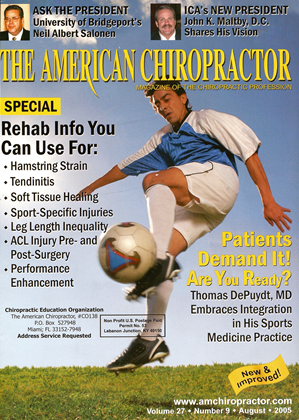Having worked with infants for many years and being continuously frustrated by the effects of birth trauma to their delicate nervous systems, I have been drawn to deeper levels of analysis and correction. For many years, I relied on gentle, specific, segmental adjustments of the spine. The extent of these injuries, however, led me to observe their spines from a more global perspective, looking for the effects of dural stress in the cranium and spinal column. I began doing gentle dural stretch releases focusing on the occiput. For anatomical review, the occiput is composed of four separate pieces: the vault, the base and the two lateral portions where the condylcs are. Together, they form the foramen magnum. At birth, these portions are separate and moveable, connected by the membranous dura matter. The compressive forces of even normal, natural births, slide and frequently misalign the occipital bones. Deep in the cranium, the base of the occiput forms the foramen magnum with its articulation to the sphenoid. The sphenoid is considered the "keystone" bone of the skull, because it connects with almost all of the major bones of the skull. Occipital distortion, therefore, can adversely affect the entire cranial alignment. Additionally, the flexion/extension motion of the entire cranium depends on the mobility of the sphenobasilar joint. This important, rhythmic motion allows the cerebral spinal fluid to circulate freely, providing vital nutrients for the central nervous system. Birth, as we know it today, with its many operative and unnatural interventions, causes an undo amount of compression on all of the cranial bones. Left uncorrected, this causes a lifetime of cranial distortion. One study examined more than 1,200 "normal" newborns. 88% manifested some sort of cranial faults. Of the 88% examined, 94% had been born under anesthesia, resulting in greater use of obstetrical operative devices. Of this same 88%, 95% manifested a disturbance of the occipital condyles, with 75% demonstrating bilateral compression of the condyles. The occipital condyles are the "footers" which line up the atlas and, therefore, affect entire spinal alignment. Additionally, distortion of the dura from cranial misalignment has a torsion effect on the entire spinal column. Addressing the occiput and, consequently, the dura in our care, facilitates a deeper, more significant correction. I encourage all doctors of chiropractic to continue to explore avenues of knowledge, which will further enhance the invaluable service we provide.! Speaker At CHIRQPRACTIC'Qfi February 12-18, 2006 J Dr Jeanne Ohm instructs internationally on the topic "Chiropractic Care for Pregnant Women and Children ". She is executive coordinator of the International Chiropractic Pediatric Association and can be reached via their website at www.icpa4kids.com. This flexion/extension rhythmic motion allows the cerebral spinal fluid to circulate freely, providing vital nutrients for the central nervous system.
 View Full Issue
View Full Issue






